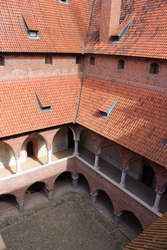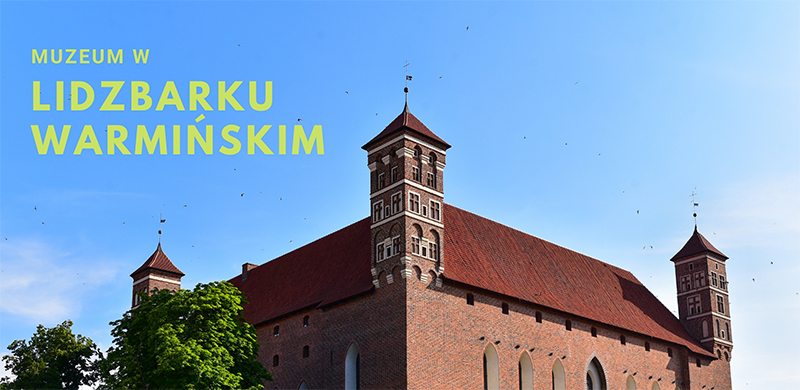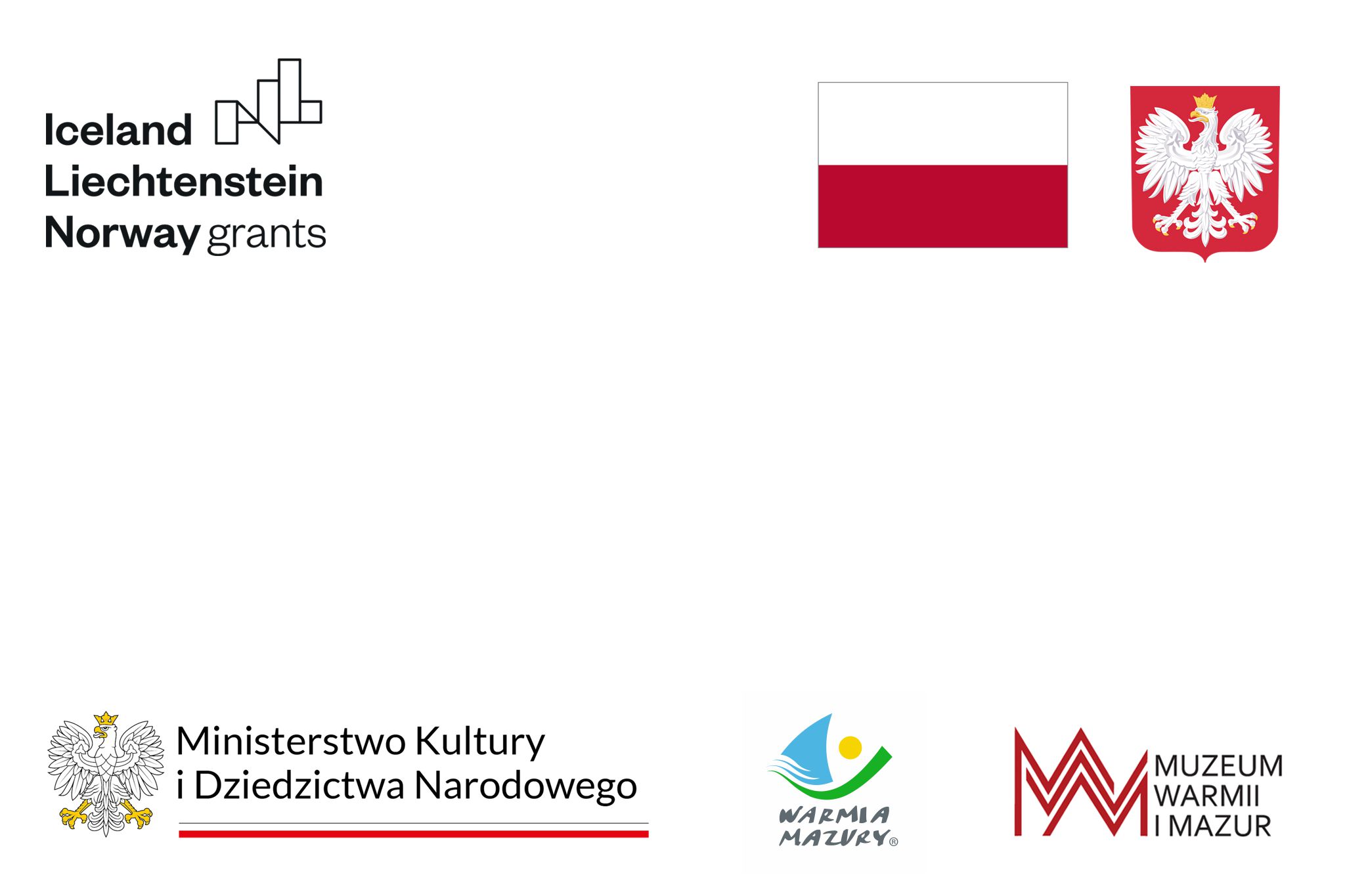The Museum of Warmia and Mazury in Olsztyn is implementing the project "Conservation and restoration of the fourteenth-century castle in Lidzbark Warmiński – pearls of Gothic architecture in Poland – ii stage" in partnership with The Norwegian Institute for Curtural Heritage Research.
The basic assumption of the project is to raise the state of preservation of the priceless cultural heritage, which for the area of historical Warmia remains the fourteenth-century castle of the Warmian bishops in Lidzbark Warmiński. The activities are aimed at protecting cultural heritage against progressive degradation, improving the quality of the historic substance and enriching the cultural offer by increasing the potential of the Warmia Museum.
The current project (2014-2016) is a continuation of conservation and renovation works as part of the project "Rescue conservation works of the cloisters of the Lidzbark Castle" (2009-2011). Its aim was to protect cultural heritage and increase the tourist attractiveness of Lidzbark Warmiński. The works focused on the renovation and preservation of the open castle cloisters, unique in Europe.
The first stage of works aimed at revitalizing the historical seat of the Warmian bishops in Lidzbark Warmiński cost 1,234 thousand euros, of which 988 thousand came from Norwegian funds. The rest – as its own contribution – was provided by the local government of the Warmian-Masurian Voivodeship. Design activities focused on five elements: repair of the desktop roof of the cloisters, renovation of the pavement surface of the heir and its drainage, conservation of the brick threads of the cloister walls and the eighteenth-century sundial, conservation of stone elements of the cloisters and wooden balustrade of the stairs leading to the first floor.
The most important and spectacular element of the activities of this project was the conservation of polychromes exposed on the walls and vaults of the cloister floor and interdisciplinary research of the paintings. The paintings discovered and conservatively preserved – dated to the last two decades of the fourteenth century – showed a very high level of artistic decorations of the Warmian bishop's residence, and the conducted research has shown links with Czech art, close to the court of Emperor Charles IV. The unveiling of the paintings hidden under a dozen or even several dozen layers of whites – most likely funded by Bishop Henry III Sorbom – was a huge conservation and research challenge determining the next revitalization activities of the castle in Lidzbark Warmiński.
The works carried out as part of the project "Rescue conservation works of the cloisters of the Lidzbark Castle" – primarily their quality and the importance of the achieved research and conservation results – were noticed in the competition "Sybilla 2011 – museum event of the year". The Museum of Warmia and Mazury in Olsztyn, which implements the project, was in the finals of the competition in the "management" category.
[center] [Img] https://m.wmwm.pl/2015/09/n/norway-logo-4723.jpg [/ img] [/ center]
The basic assumption of the project is to raise the state of preservation of the priceless cultural heritage, which for the area of historical Warmia remains the fourteenth-century castle of the Warmian bishops in Lidzbark Warmiński. The activities are aimed at protecting cultural heritage against progressive degradation, improving the quality of the historic substance and enriching the cultural offer by increasing the potential of the Warmia Museum.
The current project (2014-2016) is a continuation of conservation and renovation works as part of the project "Rescue conservation works of the cloisters of the Lidzbark Castle" (2009-2011). Its aim was to protect cultural heritage and increase the tourist attractiveness of Lidzbark Warmiński. The works focused on the renovation and preservation of the open castle cloisters, unique in Europe.
The first stage of works aimed at revitalizing the historical seat of the Warmian bishops in Lidzbark Warmiński cost 1,234 thousand euros, of which 988 thousand came from Norwegian funds. The rest – as its own contribution – was provided by the local government of the Warmian-Masurian Voivodeship. Design activities focused on five elements: repair of the desktop roof of the cloisters, renovation of the pavement surface of the heir and its drainage, conservation of the brick threads of the cloister walls and the eighteenth-century sundial, conservation of stone elements of the cloisters and wooden balustrade of the stairs leading to the first floor.
The most important and spectacular element of the activities of this project was the conservation of polychromes exposed on the walls and vaults of the cloister floor and interdisciplinary research of the paintings. The paintings discovered and conservatively preserved – dated to the last two decades of the fourteenth century – showed a very high level of artistic decorations of the Warmian bishop's residence, and the conducted research has shown links with Czech art, close to the court of Emperor Charles IV. The unveiling of the paintings hidden under a dozen or even several dozen layers of whites – most likely funded by Bishop Henry III Sorbom – was a huge conservation and research challenge determining the next revitalization activities of the castle in Lidzbark Warmiński.
The works carried out as part of the project "Rescue conservation works of the cloisters of the Lidzbark Castle" – primarily their quality and the importance of the achieved research and conservation results – were noticed in the competition "Sybilla 2011 – museum event of the year". The Museum of Warmia and Mazury in Olsztyn, which implements the project, was in the finals of the competition in the "management" category.
[center] [Img] https://m.wmwm.pl/2015/09/n/norway-logo-4723.jpg [/ img] [/ center]







